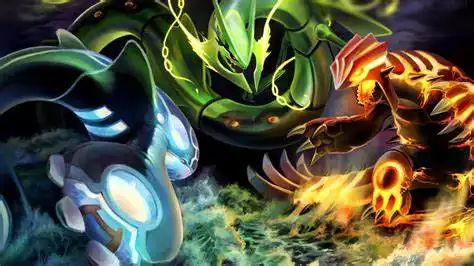In the world of digital gaming, few franchises have had as much of an impact as Pokémon. The charming characters, comprehensive world-building, and innovative gameplay mechanics have made it a favorite among generations of players.
One of the most transformative developments in Pokémon gaming has been the Pokéwalker – the unique gadget that came bundled with the HeartGold and SoulSilver versions. It offered both a fresh dimension to playing Pokémon and a way to incorporate elements of the virtual world into your daily life.
The Pokéwalker was a tool for immersion, syncing the in-game character’s steps with the player’s real world physical activities, creating the sensation of really living in a Pokémon world. The tool randomly encountered Pokémon and gathered items, a first step towards making the Pokémon world feel like a part of daily life for users.

This was an innovative way of looking at gaming using technology beyond the confines of a console, integrating it more seamlessly into players' everyday existence. It blurred the lines between the virtual and real, bringing Pokémon to life in a way few games had done before.
Before the Pokéwalker, Pokémon was predominantly an insular affair. Players would roam the in-game world, capturing and training creatures to battle in their quest to be the ultimate Pokémon master. However, with the introduction of the Pokéwalker, the game stepped out into the real world, with each step the player took in reality reflected in the game.
Linked with the player's stats, the Pokéwalker allowed a unique form of growth within the game, unlocking additional items and Pokémon based on real-world activity. This was a key feature that helped HeartGold and SoulSilver stand out from their predecessors and firmly established the Pokéwalker as an innovative evolution of game mechanics.
Despite being a peripheral to the main game, the Pokéwalker made meaningful contributions to one's progress in the Pokémon world by encouraging the player to engage more actively, even when they were not directly playing the game.
However, the Pokéwalker was more than just a tool for increasing game engagement – it was a catalyst for inspiring a healthier lifestyle. It rewarded an active lifestyle, promoting physical fitness through its pedometer-like mechanism.
By rewarding physical activity with in-game benefits, it tapped into the human spirit of competitiveness and achievement. It encouraged players to take the extra steps, go the extra mile, to level up their Pokémon or find that special item they've been looking for.
The Pokéwalker's significance on Pokémon gaming extends beyond just the HeartGold and SoulSilver versions. It played a significant role in the evolution and transformation of mechanics in later installments of Pokémon games.
It represented a leap towards pervasive gaming, a concept where the game becomes a part of the player's life rather than just a detached reality on a virtual platform. This concept would later be cemented in the franchise with the introduction of Pokémon Go, which took the idea of real-world interaction to an entirely new level.
While the Pokéwalker may have seemed like just an add-on, it paved the way for the likes of Pokémon Go which took the interaction between the real and Pokémon world to a totally new level, expanding the boundaries of gaming beyond the traditional settings to the great outdoors.
Thus, the Pokéwalker was more than just a device that accompanied a Pokémon game. It was a technological innovation that pushed boundaries. It didn’t just enhance the Pokémon universe; it reshaped it and ultimately prepared the ground for a dramatic shift in the trajectory of games that followed.
The Pokéwalker was not just an object that counted your steps. It was a tool that turned those steps into progress in a game, progress that felt meaningful to the player. It was this essential feedback loop that would later become a cornerstone of Pokémon Go’s gameplay.
Decoding the success of the Pokéwalker also entails appreciating how it made each player's journey unique in the Pokémon landscape. The items you obtained, the Pokémon you encountered – everything was tied to your personal daily activities which made your Pokémon journey have a personal touch.
Pokémon has always thrived on generating a sense of connection between players and the game's creatures. But with the introduction of the Pokéwalker, these links gained a whole new depth that transcended the digital divide, making the game more immersive and emotionally connected.
The Pokéwalker genuinely brought a transformative shift in how Pokémon games are played, blending the virtual with the physical, influencing subsequent releases, and setting fresh standards in gameplay mechanics that are still intact in today's Pokémon world.
While not without its flaws and limitations—the Pokéwalker couldn’t distinguish between deliberate steps and mere shaking—the Pokéwalker has indisputably become a key part of Pokémon’s gaming history and an iconic landmark in its journey of evolution.
The Pokéwalker had a profound effect on the Pokémon gaming universe, embodying the essence of innovation. Its impact still resonates in the franchise and will always be remembered as more than just an accessory — it was a game-changer.
We learn from the Pokéwalker that gaming innovation need not always be about defining advancements in graphics, storyline, or controls. Sometimes, it can come from bridging the gap between the virtual and the physical world, enhancing player engagement, and ultimately transforming the way we experience and perceive games.